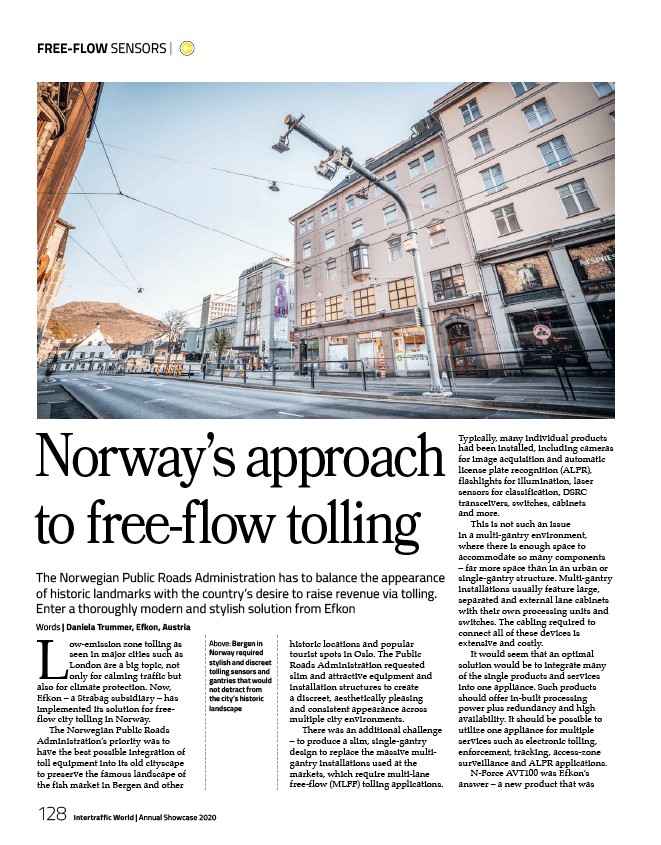
FREE-FLOW SENSORS |
Norway’s approach
to free-flow tolling
The Norwegian Public Roads Administration has to balance the appearance
of historic landmarks with the country’s desire to raise revenue via tolling.
Enter a thoroughly modern and stylish solution from Efkon
Words | Daniela Trummer, Efkon, Austria
Above: Bergen in
Norway required
stylish and discreet
tolling sensors and
gantries that would
not detract from
the city’s historic
landscape
Low-emission zone tolling as
seen in major cities such as
London are a big topic, not
only for calming traffic but
also for climate protection. Now,
Efkon – a Strabag subsidiary – has
implemented its solution for freeflow
city tolling in Norway.
The Norwegian Public Roads
Administration’s priority was to
have the best possible integration of
toll equipment into its old cityscape
to preserve the famous landscape of
the fish market in Bergen and other
128 Intertraffic World | Annual Showcase 2020
historic locations and popular
tourist spots in Oslo. The Public
Roads Administration requested
slim and attractive equipment and
installation structures to create
a discreet, aesthetically pleasing
and consistent appearance across
multiple city environments.
There was an additional challenge
– to produce a slim, single-gantry
design to replace the massive multigantry
installations used at the
markets, which require multi-lane
free-flow (MLFF) tolling applications.
Typically, many individual products
had been installed, including cameras
for image acquisition and automatic
license plate recognition (ALPR),
flashlights for illumination, laser
sensors for classification, DSRC
transceivers, switches, cabinets
and more.
This is not such an issue
in a multi-gantry environment,
where there is enough space to
accommodate so many components
– far more space than in an urban or
single-gantry structure. Multi-gantry
installations usually feature large,
separated and external lane cabinets
with their own processing units and
switches. The cabling required to
connect all of these devices is
extensive and costly.
It would seem that an optimal
solution would be to integrate many
of the single products and services
into one appliance. Such products
should offer in-built processing
power plus redundancy and high
availability. It should be possible to
utilize one appliance for multiple
services such as electronic tolling,
enforcement, tracking, access-zone
surveillance and ALPR applications.
N-Force AVT100 was Efkon’s
answer – a new product that was